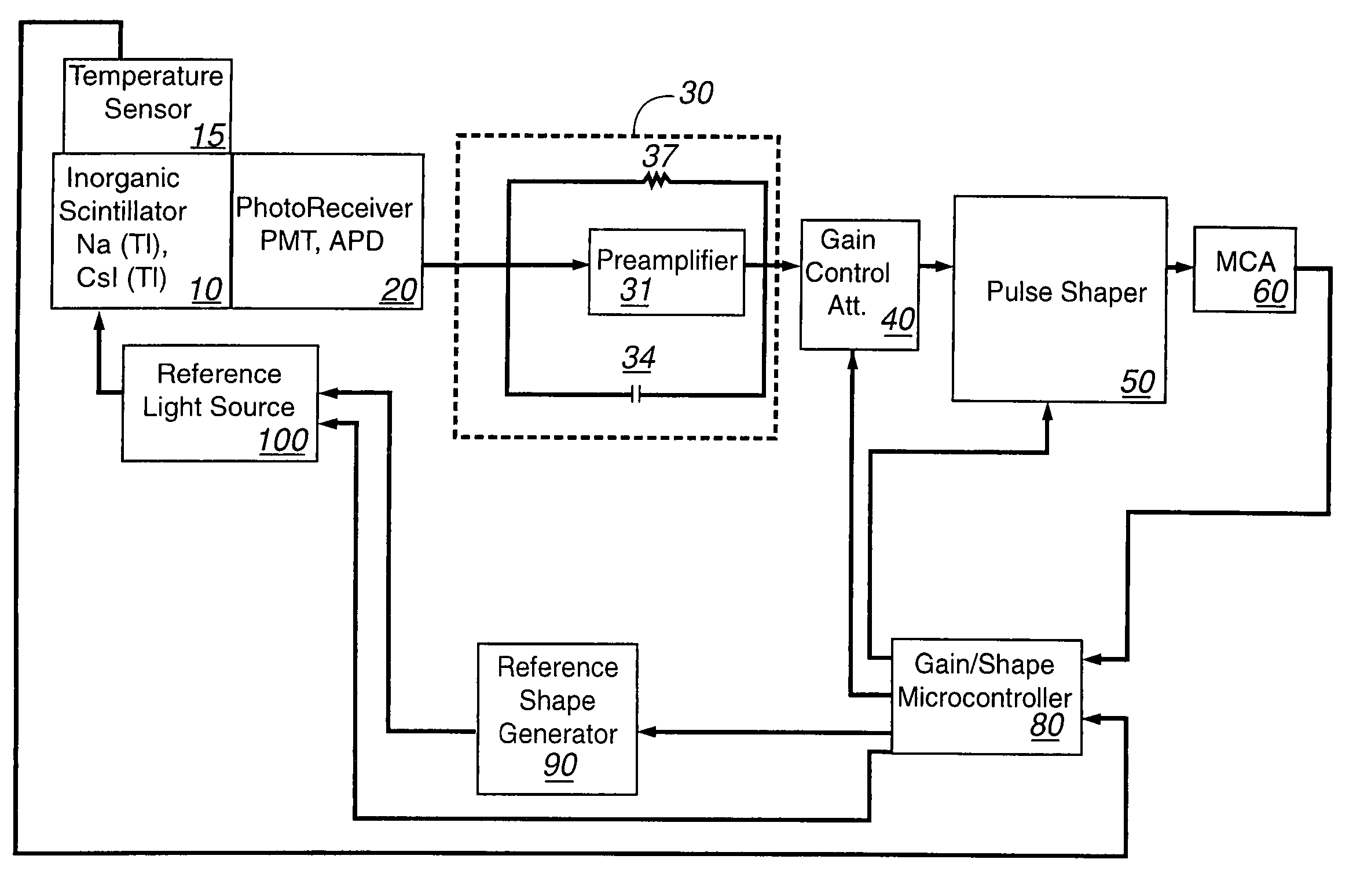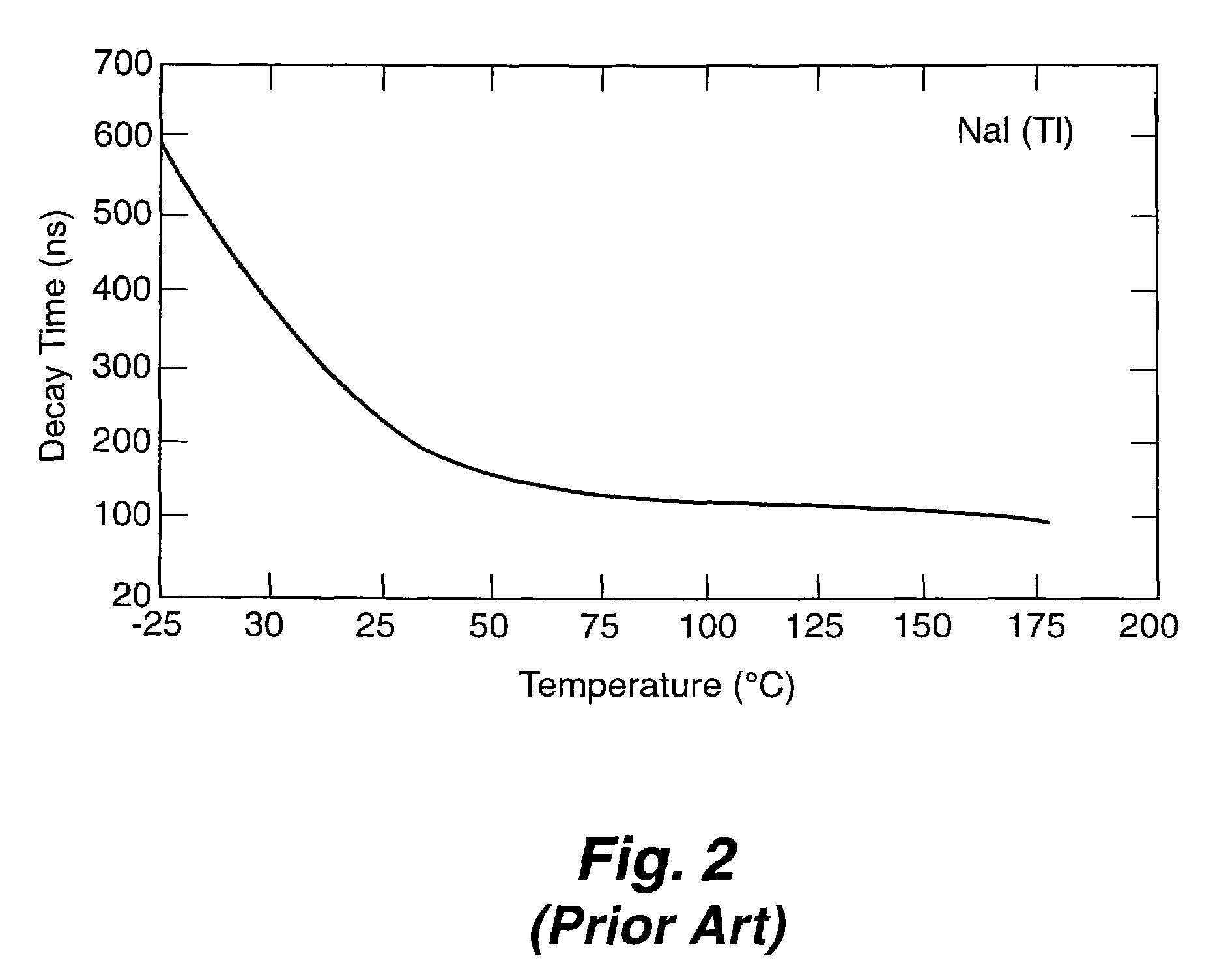Apparatus and method for temperature correction and expanded count rate of inorganic scintillation detectors
a technology count rate, which is applied in the field of temperature correction and expanded count rate of inorganic scintillation detector, can solve the problems of difficult to compensate accurately over a given temperature range, strong temperature dependence and corresponding count rate limitations, and inability to meet the requirements of measurement, etc., and achieve the effect of expanding the count ra
- Summary
- Abstract
- Description
- Claims
- Application Information
AI Technical Summary
Benefits of technology
Problems solved by technology
Method used
Image
Examples
first embodiment
[0032]Referring now to FIG. 3, the present invention compensates for temperature using a standard preamplifier and pulse shaper setup. Inorganic scintillator 10 (e.g., Nal (Tl), Csl (Tl), LaCl3 (Ce), and the like) is optically coupled to photoreceiver 20 (e.g., photomultiplier tubes (PMTs), photodiodes, and avalanche photodiodes (APD)). Output from photoreceiver 20 is directed to temperature correction circuitry for temperature and gain correction that includes charge-sensitive preamplifier package 30, gain control attenuator 40, pulse shaper 50, and multi-channel analyzer (MCA) 60.
[0033]A feedback loop is used to adjust for ambient temperature changes affecting scintillator 10. The feedback loop incorporates microcontroller 80, reference shape generator 90, and reference light source 100.
[0034]Charge-sensitive preamplifier package 30 comprises high-impedance inverting amplifier 31 connected in parallel with capacitor 34 and resistor 37. Resistor 37 is used to prevent circuit satura...
second embodiment
[0070]Both modes of the second embodiment provide a stable reference light source that is injected into scintillator 10 by reference light source 100 and collected by photoreceiver 20. Thus, the stability of the light interface between scintillator 10 and photoreceiver 20 is included in the system feedback loop. Reference shape generator 90 provides a reference pulse to reference light source 100 that closely approximates scintillator 10 detected pulse shapes and corresponding temperature dependence. The amplitude of the reference pulse is selected so that the reference pulse is positioned at the upper end of the scale on MCA 60. Gain microcontroller 80 calculates the centroid of the reference pulse and corrects the gain via gain control attenuator 40 in order to maintain the reference pulse in the specified position. The frequency of the reference pulses is determined by the speed of temperature changes in scintillator 10 and stability of the feedback loop system.
[0071]The second e...
PUM
 Login to View More
Login to View More Abstract
Description
Claims
Application Information
 Login to View More
Login to View More - R&D
- Intellectual Property
- Life Sciences
- Materials
- Tech Scout
- Unparalleled Data Quality
- Higher Quality Content
- 60% Fewer Hallucinations
Browse by: Latest US Patents, China's latest patents, Technical Efficacy Thesaurus, Application Domain, Technology Topic, Popular Technical Reports.
© 2025 PatSnap. All rights reserved.Legal|Privacy policy|Modern Slavery Act Transparency Statement|Sitemap|About US| Contact US: help@patsnap.com



